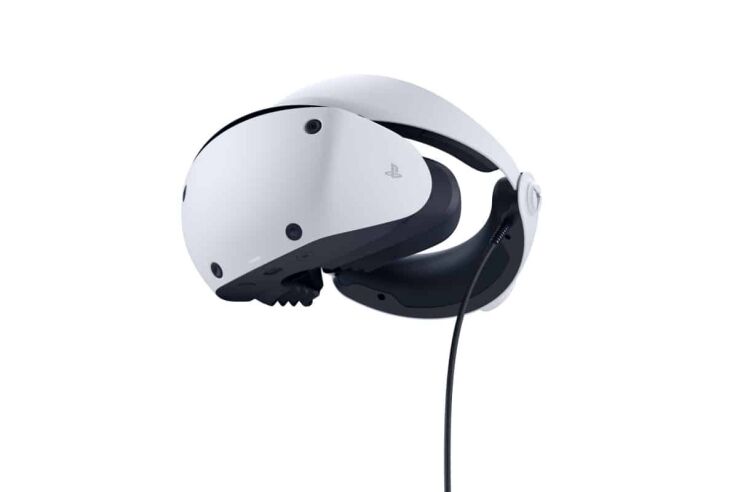Does PSVR 2 track eye motion? Yes, but not in the creepy way
We take a look at why PSVR 2 uses eye tracking

WePC is reader-supported. When you buy through links on our site, we may earn an affiliate commission. Prices subject to change. Learn more
As we are closer than ever to the PSVR 2 release date, we’ve been seeing a lot of different queries surrounding Sony’s VR headset: Can you wear glasses with it? What size room do you need? and of course, the subject of today’s article: Does PSVR 2 track eye motion?
This is a good question to ask, not only when trying to ascertain what the headset is capable of, but there are some understandable privacy concerns. However, PSVR 2 eye tracking is an interesting topic to cover regardless of the reasoning, so, does PSVR 2 track eye motion? Yes, but why?
NOW READ: PSVR 2 Review: Captivating, comfortable, costly.
Does PSVR 2 track eye motion? Yes, and for good reason.
So, yes, the PSVR 2 does track eye motion. However, it’s probably not for nefarious sneaky corporate overlord stuff (at least not yet).
The reason the PSVR 2 has eye tracking is to help with rendering the virtual environment, it does this via a fascinating process known as foveated rendering.
What is foveated rendering? How does eye tracking help enhance the experience?
Foveated rendering was first used in the VR space by the Fove headset. Since then it’s become the best way to improve performance for VR headsets, but how does it work?
Foveated rendering is a technique to increase performance by only fully rendering the sections of the image that the user is actually looking at.
So, the headset tracks where the eyes are looking, and downgrades the visual fidelity outside of that area, saving process power and using it for the bits that actually matter. It doesn’t entirely stop rendering these areas, though, as they can still be seen by the peripheral vision, albeit it less clearly.
Foveated rendering as a technique is so named after the Fovea, which is the “small central pit of closely packed cones in the eye”. This is part of the eye responsible for central sharp vision. i.e what you’re actually focusing on.
It’s positioned directly opposite the pupil (the central opening of the eye) for maximum visual acuity. Additionally, as foveated rendering allows the headset to know where the user is looking, it can also help dictate the 3D positional audio.
So yes, the PSVR 2 track eye motion but only to help improve performance and therefore enhance the experience. We aren’t yet sure if the eye tracking will be used for any specific in-game features, but hopefully, there is the option to turn it off, to ease people’s privacy concerns.
Does PSVR 2 track eye motion?
So, yes, the PSVR 2 does track eye motion. However, it’s probably not for nefarious sneaky corporate overlord stuff (at least not yet).
The reason the PSVR 2 has eye tracking is to help with rendering the virtual environment, it does this via a fascinating process known as foveated rendering.
What is foveated rendering?
The headset tracks where the eyes are looking, and downgrades the visual fidelity outside of that area, saving process power and using it for the bits that actually matter. It doesn’t entirely stop rendering these areas, though, as they can still be seen by the peripheral vision, albeit it less clearly.
PSVR 2 FAQs!
If you’re eager to know everything about the PSVR 2, you’re in luck, as we’ve written a lot of pages about the PSVR 2. For your convenience, we’ve listed it all below!
- Best Games for PSVR 2: What to look forward to!
- Does PSVR 2 Support HDR?
- Are the PSVR 2 controllers compatible with PS4?
- Can I Use PSVR Controllers on PSVR 2?
- Do I need a TV to use PSVR 2?
- Is PSVR 2 Multiplayer?
- PSVR 2 head size – Everything you need to know
- Does PSVR 2 work with PS4? No, and here’s why
- How to connect PSVR 2 to PS5: Quick PSVR 2 setup guide
- How to change PSVR 2 viewing modes?
- Where to buy PSVR 2 & pre order details (All regions)
- How To Sync PSVR 2 Sense Controller?
- How to turn the PSVR2 Sense controller on and off?
- Is The PS Move Controller compatible with PSVR 2?
- Is the DualSense Edge controller compatible with PSVR 2?
- Can you play normal PS5 games with PSVR 2? Cinematic mode explained
- Can you wear over ear headphones with the PSVR 2?
- Can you move while wearing the PSVR 2 headset?
- Does PSVR 2 track eye motion? Yes, but not in the creepy way
- What is PSVR 2 see through mode and how does it work?
- What size room do you need for PSVR 2?
- Can you wear glasses with PSVR 2?
- Vive XR Elite vs PSVR 2: Can console VR compete in 2024?
- Meta Quest Pro vs PSVR 2: Which is the best next-gen VR headset?